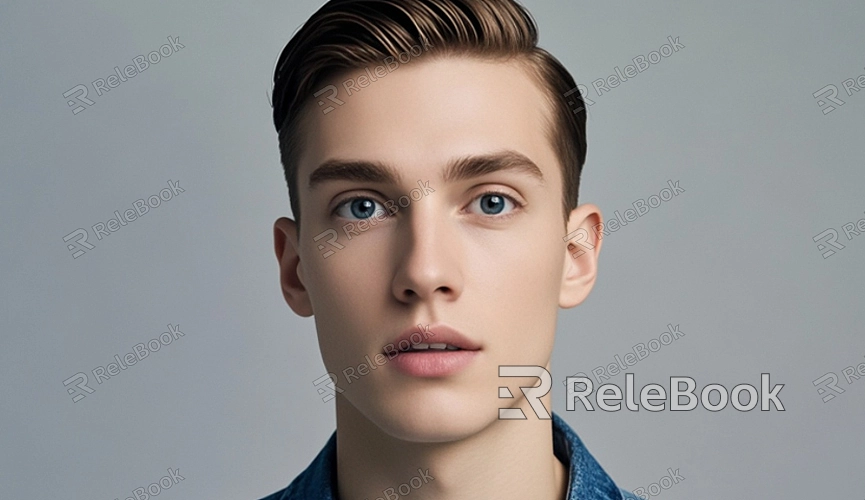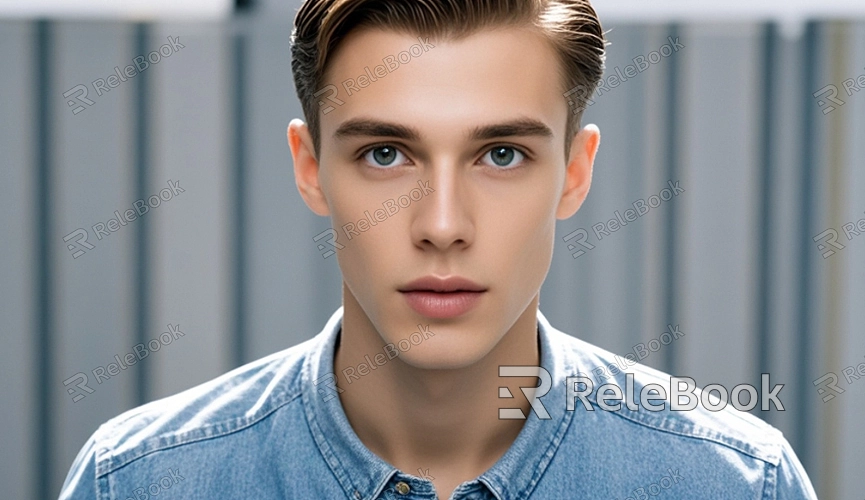How to Use Facial Sculpting Tools?
Whether designing 3D characters, animating figures, or developing virtual avatars for games, facial sculpting tools are essential. With these tools, users can fine-tune facial structures, create expressions, add textures, and refine details. This article will introduce you to how to effectively use facial sculpting tools, guiding you through basic steps and advanced techniques to help you get started with ease.

Choosing the Right Sculpting Software
The first step in facial sculpting is selecting the right software. There are many 3D sculpting programs available, such as ZBrush, Blender, and Mudbox. Each software has its unique features and interface, so it’s important to get familiar with the tool you choose before diving in.
Within the software, find the sculpting mode or toolbar, and make sure you can access the sculpting environment. In this mode, you’ll have access to various brushes and tools to modify the facial areas of your model. Most programs also offer a quick preview feature so you can check the sculpting effects in real-time.
Creating a Base Facial Model
Before you start sculpting, you’ll need to have a base facial model. You can either create one from scratch or use an existing 3D head model. Many sculpting software platforms and resource websites offer pre-made base models that you can download and use.
Once you have a base model, ensure that the facial structure is accurate. Check the placement of key features like the eyes, nose, mouth, and cheekbones. While you can adjust these features during the sculpting process, the more accurate the base structure is, the easier it will be to sculpt later.

Using Brush Tools to Sculpt Facial Details
During the sculpting process, brushes are one of the most important tools. Every software provides different types of brushes, such as depth brushes, smooth brushes, and pull brushes. Choosing and using these brushes correctly will help you add various details to the facial model.
Depth Brushes: These are used to emphasize and deepen certain facial features, such as the eye sockets or lip contours.
Smooth Brushes: These help eliminate rough edges that might appear during sculpting, ensuring a smooth surface on the model.
Pull Brushes: These are great for adjusting the facial contour, such as enlarging or narrowing the cheekbones or elongating the nose.
When starting to sculpt, it’s a good idea to begin with large adjustments, like modifying the shape of the cheekbones or jawline. Then gradually refine the smaller facial features, like the wrinkles around the eyes and the texture of the lips.
Refining the Sculpting Process
In the refinement stage of sculpting, you can focus on adding intricate details to the face, such as skin texture, subtle expression changes, and wrinkles. This step is crucial as it determines the overall realism of the model.
Using smaller brushes, you can start sculpting wrinkles, laugh lines, the texture of the eyebrows, and the fine lines on the lips. Avoid making large adjustments at once—keep the changes small and precise to maintain better control over the result.
Throughout the sculpting process, adjust the viewing angle regularly and examine the model from multiple perspectives. Different parts of the face will show different details from different angles, so make sure all views look consistent and realistic.
Adding Facial Textures and Materials
After finishing the sculpting, the texture and material of the facial model become very important. Adding detailed skin textures will enhance the realism of the model. Many sculpting programs have built-in texture painting features or allow you to export the model into specialized texturing tools.
You can use high-resolution skin maps and overlay subtle fine lines, pores, and blemishes to make the model appear closer to a real human face. Don’t forget to apply appropriate glossiness and reflectivity to the model to simulate the light and shadow effects of real skin.
Saving and Exporting Your Sculpt
Once your sculpture is complete, remember to save your project file. Most sculpting programs allow you to save in project file formats so you can revisit and make changes later. Additionally, you will need to export your model into a common 3D file format, such as.obj or. fbx, so it can be used in other 3D software or for animation and rendering.
When exporting, make sure to select the appropriate level of detail (some programs offer multiple levels of detail). If the model is intended for real-time rendering, such as in games or AR applications, you might need to reduce the polygon count to ensure better performance.
Facial sculpting tools offer endless creative possibilities for 3D designers; from building a basic facial model to refining facial textures, every step influences the final result’s realism. By using the sculpting tools effectively, selecting the right brushes, and adding textures, you can easily craft highly detailed and realistic 3D facial models. To further enhance your sculpting projects, visit the Relebook website to download a wide selection of 3D models and textures.
FAQ
What sculpting software is best for beginners?
Blender is a great choice for beginners because it’s free and powerful. ZBrush is also highly popular, especially among professional sculptors.
How do I make a facial model more realistic during sculpting?
Observe real facial photos or scanned models for reference. Use detailed brush adjustments to add features like wrinkles and skin pores, and control the light and shadow carefully.
What should I do if I make a mistake while sculpture?
Most sculpting software supports undo functions. If the issue is larger, you can always go back to a previous step. It’s also wise to save your work regularly to avoid losing progress.
How do I add realistic textures to my facial model?
Use high-resolution skin maps combined with subtle details like pores and wrinkles to significantly improve facial realism. Many programs have built-in texturing tools or allow you to use external texture tools.
How can I use my 3D model after sculpting?
After sculpting, you can export your model into common 3D file formats and use it in other 3D software, game engines, or animation tools.

